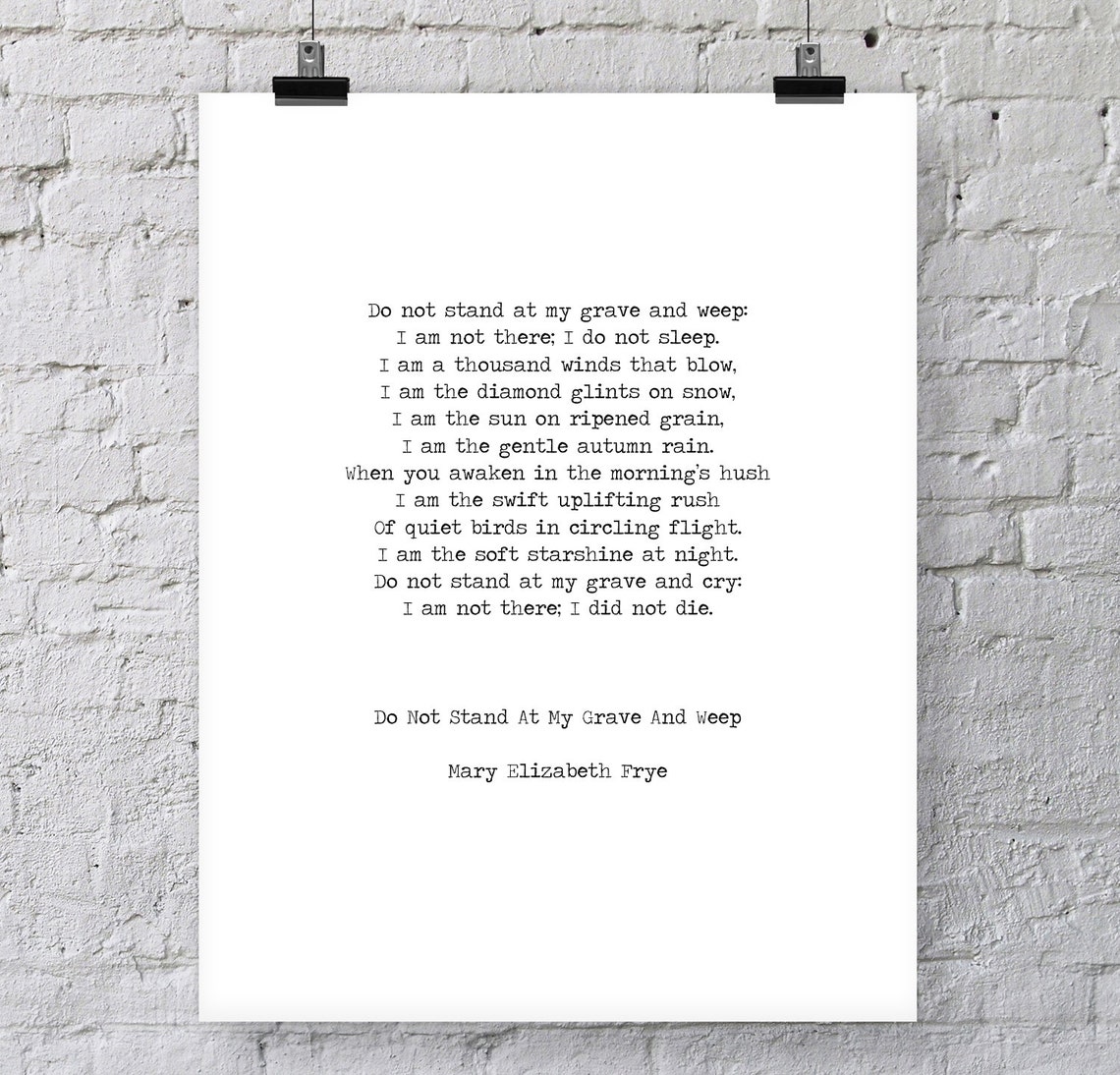
Do Not Stand at My Grave Printable Poem Mary Elizabeth Frye Etsy Israel
Mary Elizabeth Frye 1 Poems 0 Quotes 197 Followers Rating: ★ 5 Mary Elizabeth Frye Poems 1. Do Not Stand At My Grave And Weep Do not stand at my grave and weep I am not there. I do not sleep. I am a thousand winds that blow. I am the diamond glints on snow.. Read Poem See Full List Mary Elizabeth Frye Biography

Do Not Stand At My Grave And Weep Memorial Poem By Mary Elizabeth Frye in 2022 Memorial poems
How was the poem created? In 1932, a young Jewish girl from Germany, Margaret Schwarzkopf, stayed in Frye's house. Margaret's mother was ill in Germany, but she was afraid to visit her. Anti-Semitic unrest was increasing, so if Margaret had decided to go to Germany, she could have been imprisoned or killed.

√ Mary Elizabeth Frye Quotes And Poems
The poem's origins are disputed; while it's often attributed to Mary Elizabeth Frye, the poem's earliest known publication was in a 1934 issue of the poetry journal The Gypsy, which credited it to the American writer Clare Harner. Read the full text of "Immortality (Do not stand at my grave and weep)".

Pin on watch read
She was orphaned at the age of 3 and grew up to become a florist and housewife. She had never written a poem in her life but the obvious heartache of a young woman who stayed with her, prompted Frye to put pen to paper.

Poetry Print Mary Elizabeth Frye Do not Stand Poetry Wall Art Poem Print, Mary Elizabeth Frye
Line 1 Do not stand at my grave and weep This first line of 'Do Not Stand at My Grave and Weep' reveals that this is the voice of one beyond the grave. This intrigues the reader because it is spoken in a tone of authority as from one who knows what it is to die, and calls out to us from beyond the grave.
Do Not Stand At My Grave And Weep Poem by Mary Elizabeth Frye
This is a poem that is attributed to Mary Elizabeth Frye. It is a bereavement poem and became an immensely popular text that was often read at funerals. As it was seemingly originally written as a eulogy of sorts for a deceased brother, it makes sense that it would eventually find its way into other places of mourning.
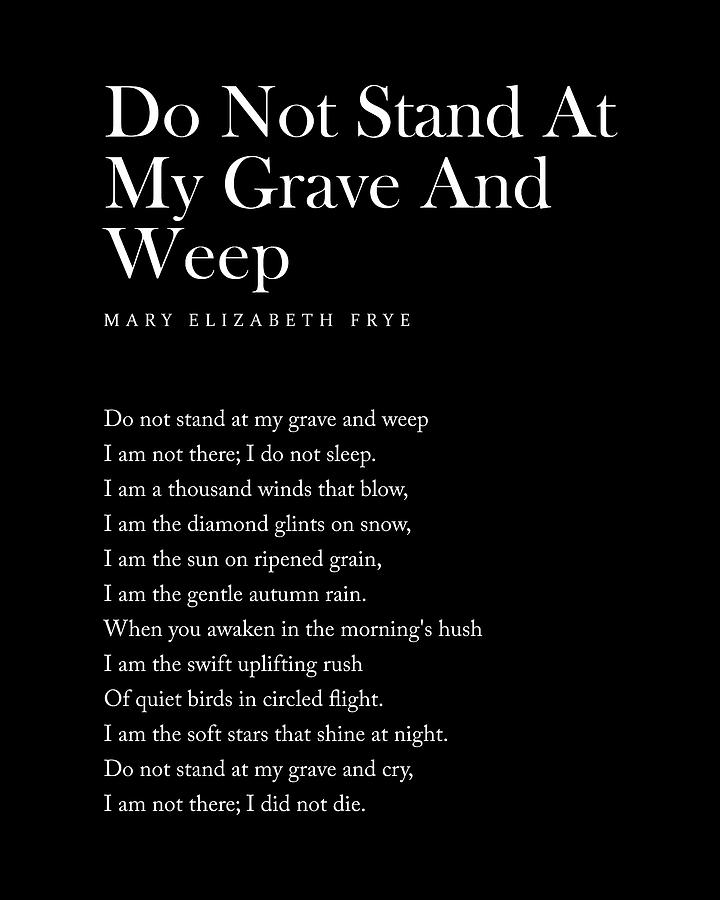
Do Not Stand At My Grave And Weep Mary Elizabeth Frye Poem Literature Typewriter Print 2
Famous bereavement poem written by Mary Elizabeth Frye in the 1930s. It says that the people you love are all around you. Do Not Stand at My Grave and Weep Do not stand at my grave and weep, I am not there, I do not sleep. I am a thousand winds that blow. I am the diamond glint on snow. I am the sunlight on ripened grain.

"Do not stand at my grave and weep" Mary Elizabeth Frye [1600 x 1200] [OC] Mary elizabeth
Do not stand By my grave, and weep. I am not there, I do not sleep— I am the thousand winds that blow I am the diamond glints in snow I am the sunlight on ripened grain, I am the gentle, autumn rain. As you awake with morning's hush, I am the swift, up-flinging rush Of quiet birds in circling flight, I am the day transcending night. Do not stand

This beautiful poem by Mary Elizabeth Frye was read out at both my great grandmother and great
Mary Elizabeth Frye (November 13, 1905 - September 15, 2004) was an American housewife and florist, best known as the author of the poem "Do not stand at my grave and weep", written in 1932. She was born in Dayton, Ohio, and was orphaned at the age of three. She moved to Baltimore, Maryland, when she was twelve.

"A touching poem by Mary Elizabeth Frye Do not stand at my grave and weep (delicate text
Mary Elizabeth Frye (1905-2004), a florist from Baltimore, MD claimed to have composed this poem in 1932 in a moment of inspiration to comfort a family friend who had just lost her mother and was unable to even visit her grave.

an old poem written in black ink on white paper with writing underneath it that says, do not
surround you. I pray by day that, come what may, no dark thing confound you. I pray ere the morrow an end to your sorrow. May angels' white chorales sing, and astound you. by Michael R. Burch

Do Not Stand at My Grave and Weep, Mary Elizabeth Frye, American housewife and florist (1905
Country: Dayton, Ohio. a Baltimore housewife and florist, best known as the author of the poem "Do not stand at my grave and weep," written in 1932. She was born Mary Elizabeth Clark, and was orphaned at the age of three. In 1927 she married Claud Frye. The identity of the author of the poem was unknown until the late 1990s, when Frye revealed.

Mary Elizabeth Frye Poem Print, Do Not Stand At My Grave And Weep; Literary Gift Print, Poetry
I do not sleep. I am a thousand winds that blow. I am the diamond glints on snow. Nationality: American Themes: Nature, Death Emotions: Sadness, Hope Topics: Life, Death of a Loved One, Life Lessons Form: Couplets Genre: Lyric Home » Mary Frye Poems Mary Frye is an American poet best known for the piece 'Do Not Stand at My Grave and Weep.'
Poem by Mary Elizabeth Frye I needed the italics practice. Calligraphy
Classics. Mary Elizabeth Frye. 1905 - 2004 / Female / American A housewife and florist, best known as the author of the poem Do Not Stand at my Grave and Weep. [ wikipedia ] Favorite. Poems. PopularA-Z. 40.6k. Do not stand at my grave and weep. Mary Elizabeth Frye.
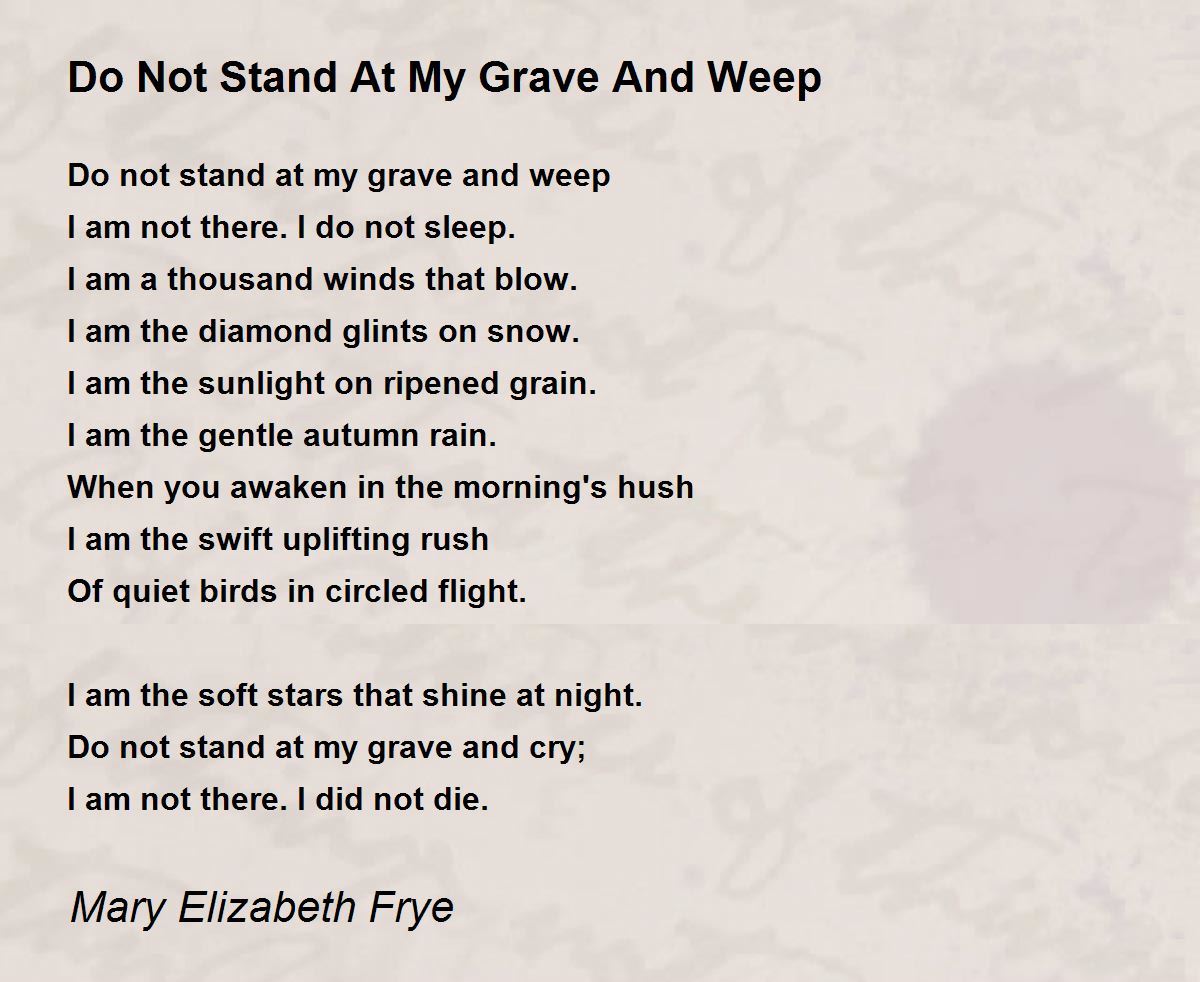
Do Not Stand At My Grave And Weep Poem by Mary Elizabeth Frye Poem Hunter
Betty Soldi presents Mary Elizabeth Frye's poem Do not stand at my grave and weep, sharing her healing process of calligraphy and with Frye's moving words, communicating messages from those departed, lifting our heads, wiping those tears and lightening our feelings of bereavement. #poeticconversatio
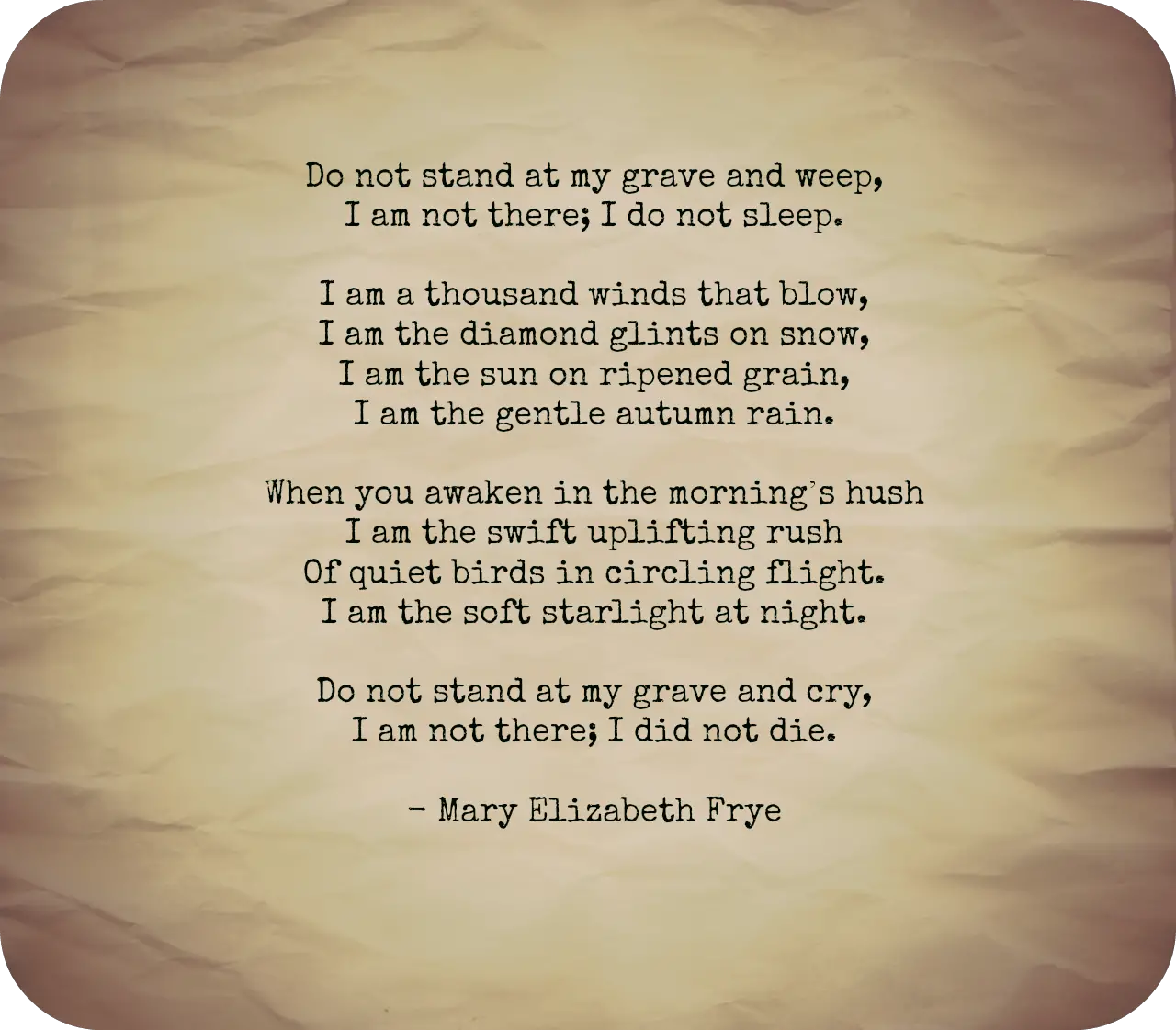
Desperate Poems
Mary Elizabeth Frye was an American housewife and florist, best known as the author of the poem Do not stand at my grave and weep, written in 1932. She was born in Dayton, Ohio, and was orphaned at the age of three. She moved to Baltimore, Maryland, when she was twelve. She was an avid reader with a remarkable memory.